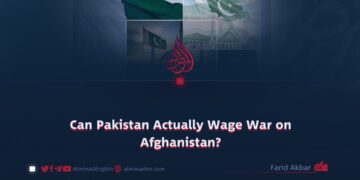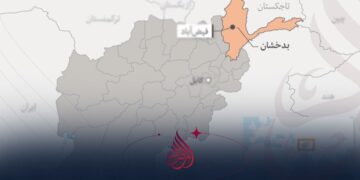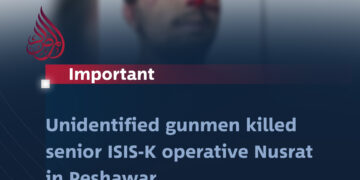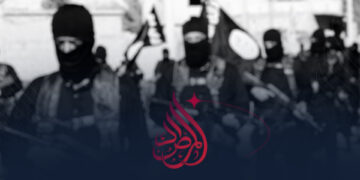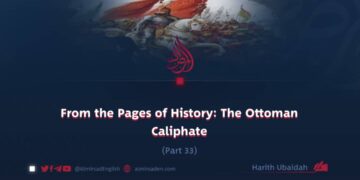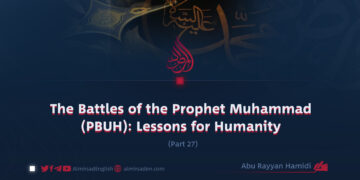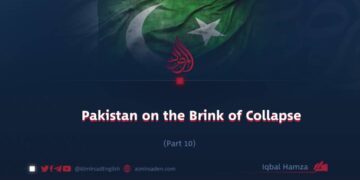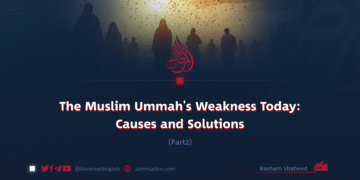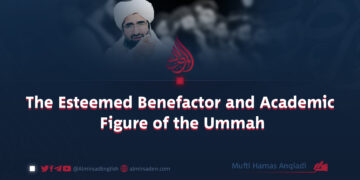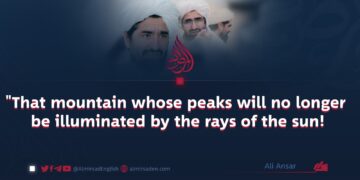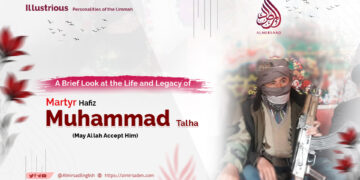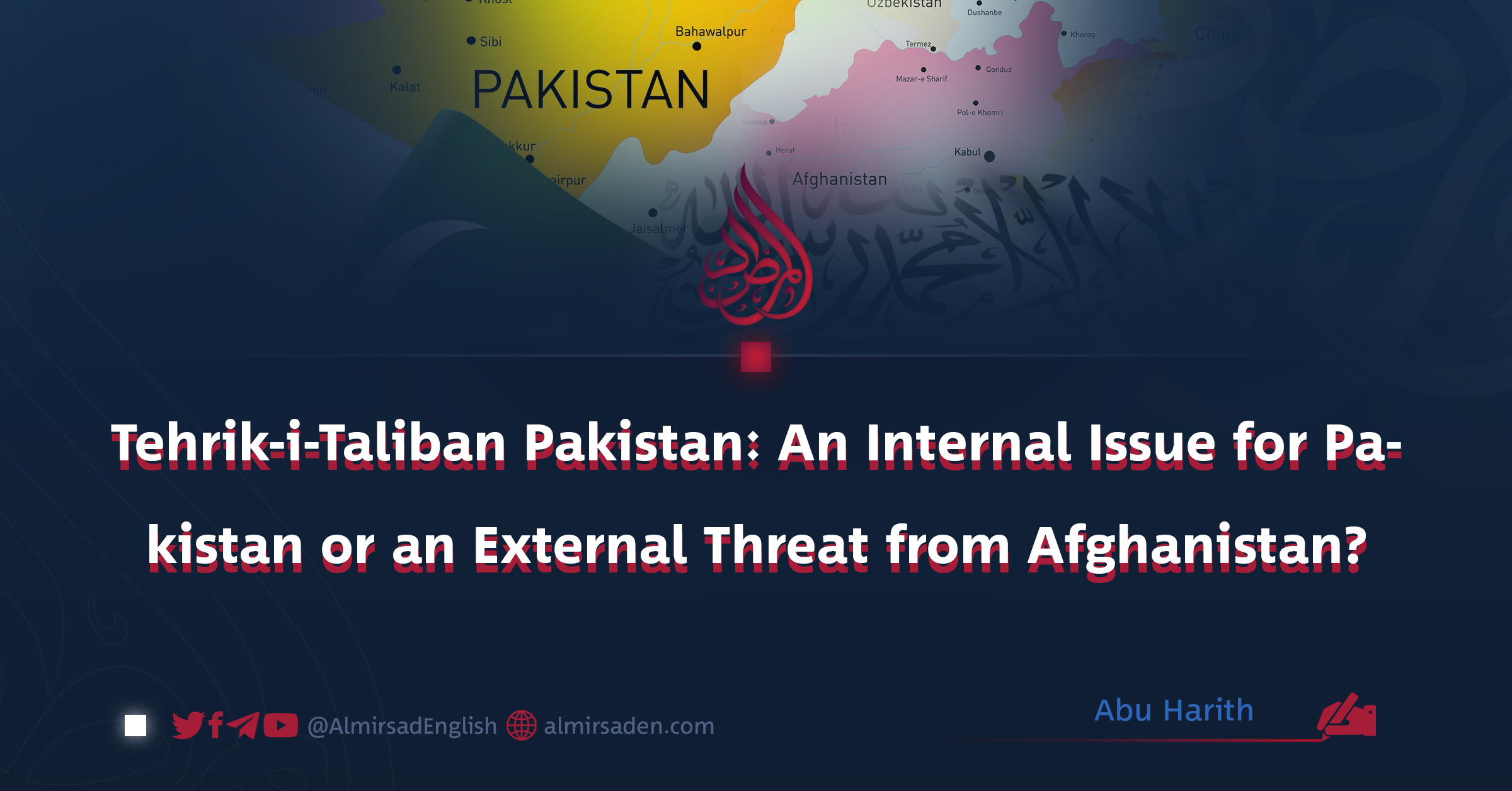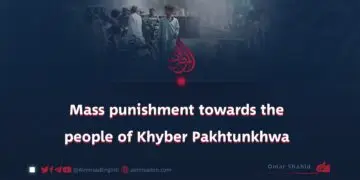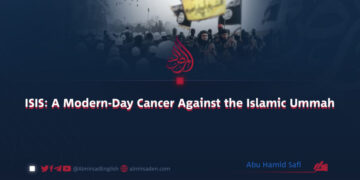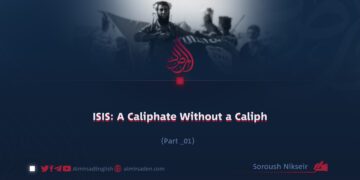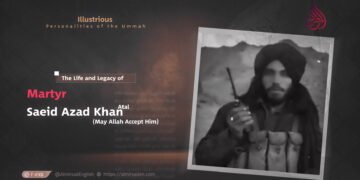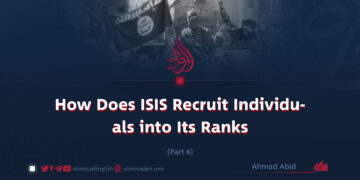Written by: Abu Harith
In the Name of Allah, the Most Gracious, the Most Merciful.
For an extended period, Pakistan has repeatedly claimed, both domestically and internationally, that TTP operatives infiltrate from Afghan territory, carry out attacks in Pakistan, and then retreat to Afghanistan for shelter.
In response to these allegations, the Islamic Emirate of Afghanistan (IEA) has consistently reaffirmed that the TTP issue is an internal matter for Pakistan and that Afghan territory is not being used against any neighboring country.
Nonetheless, it is known that some refugees, who fled severe oppression in Pakistan between 2010 and 2014, sought asylum in Afghanistan at a time when U.S. and allied forces were stationed there—remain in camps in Khost and other regions.These refugees possess neither weaponry nor affiliations with TTP. They live under international refugee protocols, similar to refugees in Pakistan, Turkey, and various other countries.
To ascertain the validity of these official claims and counterclaims, several key questions arise. These questions may serve as a wake-up call to those who blindly follow government narratives on social media or in mainstream discourse. “In urīdu illa al-islaḥa ma istataʿtu wa ma tawfīqī illa billah”—”I only desire to bring reform as much as I am able, and my success lies with none but Allah.”
First Question: Pakistan asserts that it has constructed a sturdy twelve-foot-high and five-foot-wide fence along the 2,700-kilometer Durand Line. The fence is reinforced with barbed wire, and every 200-300 meters, there is a heavily fortified post linked to a communication network and patrolling units. Behind every 10-15 posts, a large military camp is stationed with fresh troops, supplies, and medical facilities. Each post is manned by around 5-6 armed soldiers equipped with G3 rifles, sniper rifles, LMGs, and night-vision binoculars.
Behind every 10-15 posts, there exists a sizable military camp with fresh troops, provisions, and medical facilities. Each post is manned by approximately 5-6 armed soldiers, equipped with G3 rifles, sniper rifles, LMGs, and binoculars. The installation of advanced thermal cameras costing around seven to eight million rupees on each post enables them to detect even the slightest movement within five hundred meters, even in the pitch-black of night. Automatic lights, equipped with sensors, are placed every 20-30 meters, illuminating when a living entity nears.
Due to these modern lighting systems, visibility along the Durand Line at night is significantly enhanced. In addition to this, ground-based sensors are connected with alarms to alert nearby posts of any encroachments, and Pakistan’s Ministry of Defense has reportedly deployed over eight hundred drones equipped for surveillance as well as missile firing capabilities for the protection of the Durand Line.
Despite these measures, special forces with cutting-edge technology are strategically stationed within a kilometer of the Durand Line to intercept any infiltrators. With these stringent measures in place, Pakistan has assured the United States that, with significant American assistance, it has established a border so secure that “not even a bird can cross without detection.”
These are not mere theoretical measures but an undeniable reality, and Pakistan has indeed spared no effort in this endeavor. In fact, such comprehensive measures have not been undertaken even by Russia—a technologically advanced nation—along its borders with Ukraine, despite encountering a well-organized army supported by the entire European Union and advanced military technology. Similarly, Israel has not implemented analogous measures against Hamas, despite backing from the United States and the UK.
The primary question that emerges is: How can TTP Mujahideen breach Pakistani territory and operate as far as Chitral, Swat, Peshawar, and even Balochistan, given the stringent measures in place? This scenario appears beyond comprehension. Assuming Pakistan’s claims are accepted that TTP does indeed operate from Afghanistan, it should be noted that Afghanistan has not executed even 5% of such measures on its border. Therefore, instead of pointing fingers at the Islamic Emirate, Pakistan may need to introspect. If Pakistan is deserving of acknowledgment for its measures, then the TTP Mujahideen, who manage to cross the Durand Line despite these measures, deserve even greater recognition. And if this is indeed the case, then it would signify a testimony to them being on the right path, as just as the seas facilitated the way for the Sahaba, the mountains would pave the way for TTP Mujahideen (which are much harder to traverse).
Second Question: Reliable sources in Pakistan assert that Pakistan’s intelligence services recently eliminated Qureshi Ustad, the deputy governor of TTP’s Malakand Division, along with his son, son-in-law, and nine commanders. This incident was purportedly confirmed by TTP sources and by Governor Maulana Azmatullah Lala, who indicated that these Mujahideen were en route from their bases in Bajaur to their bases in Swat via road. This implies that TTP maintains an extensive network of bases across Swat, Dir, and Bajaur, from which they undertake daily operations. How is it logical to ascribe these attacks to Afghanistan?
Third Question: TTP’s organizational framework has divided Pakistan into two zones—Southern and Northern. The northern zone encompasses regions like Malakand Division, Peshawar, Mardan, Hazara, and Northern Punjab, while the southern zone comprises Kohat, Bannu, Dera Ismail Khan, Balochistan, Sindh, and Southern Punjab. Each division is designated as a “Wilayah” (province), and each district as a “Wuluswali” (administrative unit).
The purpose of mentioning this division is that approximately fifteen or sixteen governors and numerous district heads have been mandated by the TTP to remain on the battlefronts. This is clearly demonstrated by the member of the Leadership Shura, esteemed Mufti Mazahim, who has previously served as the TTP’s Deputy and Minister of Defense and is currently responsible for the southern zone’s administration.
He explicitly mentioned in a video message that he has visited various fronts in the southern zone, where, apart from border and central locations, TTP bases are prevalent in every locality. The Mujahideen freely traverse markets, mosques, and gathering areas, and the populace resolves disputes through local Taliban adjudicators rather than courts.
Furthermore, multiple members of the Leadership Shura are present on the battlefronts in lieu of their bases, such as Maulana Taha of Swat, who, in his capacity as a member of the Leadership Shura and the Accountability Commission, is actively involved in supervising the fronts. Another member of the Leadership Shura, esteemed Commander Bilal Farooqi, who previously served as the regional intelligence chief and Minister of Economy, is also engaged in guiding the Mujahideen on the fronts. Is the Pakistani state unaware of this reality, or does it deliberately make accusations against the Islamic Emirate as if it were a form of worship?
Fourth Question: Maulana Fazlur Rahman and other political figures have repeatedly expressed concerns that TTP Mujahideen are so numerous in tribal districts that they govern the marketplaces and public squares at night, and that there is no semblance of government authority remaining. Recently, TTP Mujahideen have been sighted openly roaming in areas like Khyber Agency, Bara, Matnoo, Kurram, and Orakzai. Substantial portions of locales like Dera Ismail Khan and Bannu are purportedly under their influence.
On October 26, the commissioner of Dera Ismail Khan and other state institutions issued threats advising that government officials exercise caution when using public transportation in Dera Ismail Khan and Tank, especially at night. Are these not clear indicators that the TTP is currently present on Pakistani soil, and against whom do the state institutions levy their accusations?
Fifth Question: Several high-ranking officials have repeatedly criticized Imran Khan and General Bajwa, alleging that during talks brokered by Faiz Hameed with the mediation of the Islamic Emirate of Afghanistan, around 30-40,000 Taliban entered Malakand Division and tribal districts. If this statement is true, then the responsibility should lie with those involved in these agreements rather than with the Islamic Emirate of Afghanistan. Why is justice being overlooked in this matter?
Sixth Question: Pakistan has conducted recent drone strikes in Khyber Agency, South Waziristan, and North Waziristan, killing civilians while claiming to target terrorists.
Phosphorus bombs were indiscriminately used in Mir Ali Bazaar, with the pretext that terrorists were present there. Meanwhile, the Mujahideen roam freely in areas like Laki Marwat, Mianwali, Gandapur, Tank, Bannu, Sadda, FR Peshawar, Peshawar, Mardan, Dir, and Shangla, apparently without any intelligence agency taking notice. These Mujahideen reportedly entered in significant numbers from Afghanistan, covering hundreds of kilometers with ease and infiltrating sensitive areas, all without the leading intelligence agencies having any prior knowledge. Are the Mujahideen of the Tehreek-e-Taliban Pakistan some kind of supernatural beings that these agencies remain oblivious to their movements?
The harsh reality is that Pakistan’s state institutions have become oppressors rather than protectors of the people’s lives and property, losing credibility due to their exploitation of national wealth and resources. As a result, thousands of individuals from every household have joined the ranks of the Tehrik-i-Taliban Pakistan, convinced that the ruling elite understands no language but force. This situation evidently reflects the growing strength within the TTP.
More questions could be raised, but for those who seek the truth, a single argument suffices. For the stubborn and the obstinate, no amount of reasoning will ever be enough.
May Allah transform this region into a bastion of peace and adorn it with the blossoms of an Islamic spring. Ameen, O Lord of the worlds.
May Allah’s blessings be upon His noblest creation, Muhammad (peace be upon him), and upon his family and all his companions.


